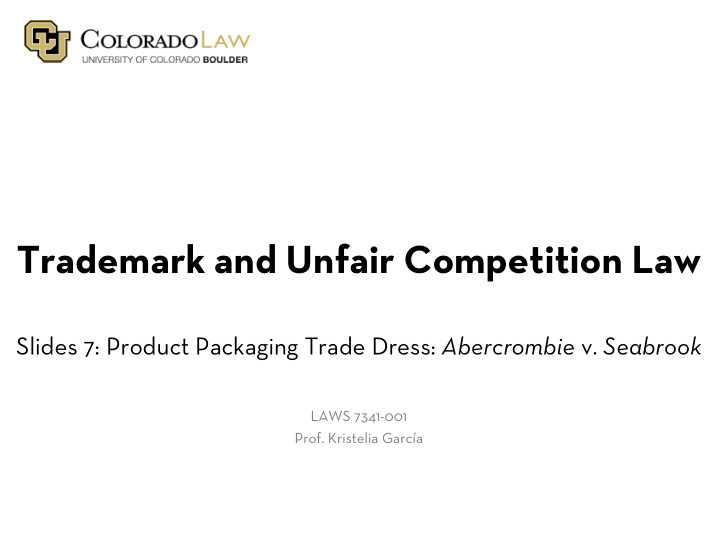



Trademark and Unfair Competition Law Slides 7: Product Packaging Trade Dress: Abercrombie v. Seabrook LAWS 7341-001 Prof. Kristelia García
Class Outline • Analyzing inherent distinctiveness of product packaging trade dress: • Seabrook factors • Abercrombie factors • 2 nd Cir’s “total look” approach 2
The “Seabrook” factors for inherent distinctiveness of trade dress: 1. Whether it is a “common” basic shape or design 2. Whether it is unique or unusual in the particular field 3. Whether it is a mere refinement of a commonly-adopted and well-known form of ornamentation for a particular class of goods viewed by the public as a dress or ornamentation for the goods 4. Whether it is capable of creating a commercial impression distinct from the accompanying words 3
4
5
6
7
8
Is the trade dress inherently distinctive? (1) Does the trade dress in question belong to a category that the courts have said will never be inherently distinctive? • Color (alone) – Qualitex • Product design/config. – WalMart v. Samara Yes No No inherent distinctiveness - must Apply inherent show secondary meaning distinctiveness test (Seabrook or Abercrombie) à 9
Is the trade dress inherently distinctive? (cont.) (2) If Seabrook , apply factors: 1. Whether it is a “common” basic shape or design 2. Whether it was [not] unique or unusual in the particular field 3. Whether it was a mere refinement of a commonly- adopted and well-known form of ornamentation for a particular class of goods viewed by the public as a dress or ornamentation for the goods 4. Whether it was capable of creating a commercial impression distinct from the accompanying words 10
Is the trade dress inherently distinctive? (cont.) (3) Finally, if the trade dress passes the Seabrook factors, we double-check by asking whether the trade dress is descriptive – i.e. does it provide information about the good or service in question that we think competitors need access to? 11
12
Recommend
More recommend